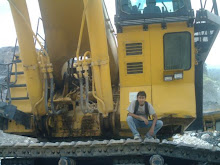It comes blasting out of the blue on your airplane flight: sudden bumpiness and sometimes even a violent plummeting. It arrives without warning, and it can be more than frightening, since it causes tens of millions of dollars in injury claims every year.
It's called clear air turbulence (CAT), and a new forecasting method, published in the Journal of Atmospheric Sciences and led by a researcher at the University of Georgia, could help pilots chart new courses around these patches of rough but clear air that can turn an otherwise unremarkable flight into a nightmare.
"Our new method allows superior forecasts for CAT beyond the tools that have been in use," said John Knox, an assistant professor in the department of geography in UGA's Franklin College of Arts and Sciences. "Commercial aircraft encounter severe-or-greater turbulence about 5,000 times each year, and the majority of these occur 10,000 feet above the Earth's surface. This new method gives pilots a way to avoid turbulence that's not associated with nearby thunderstorms or significant cloudiness."
Other authors on the paper include Donald McCann of McCann Aviation Weather Research, Inc., of Overland Park, Kan., and Paul Williams of the department of meteorology at the University of Reading in Great Britain.
The new method predicts energy associated with gravity waves—phenomena in the atmosphere that look like ocean waves but which can occur in clear air. They can be created by air flow over mountains, frontal boundaries or other causes. The type of gravity wave that Knox and his colleagues identified as a possible source of bumpiness comes from a different source. These waves are spontaneously generated and associated with jet streams at high altitudes, near cruising levels for airplanes.
When a plane flies through them, the sensation is like being in a small boat on a stormy sea. But where a boat's skipper can see rough sea, gravity waves in the air are usually invisible, and pilots often don't know they're present until they're flying right into them.
Predicting turbulence caused by nearby storms or low pressure systems is much easier than knowing when CAT might hit, said Knox. Still, several hundred significant injuries occur in the U.S. because of clear air turbulence, and because it occurs in the absence of obvious weather, wary passengers tend to wonder if they are in danger.
There are predictive models in use now, and an improved version of the Graphical Turbulence Guidance (GTG) algorithm, currently the best CAT forecasting method, will soon be online for airline pilots, said Knox. But he noted that even the GTG doesn't have some of the desirable features of the method just published in the Journal of Atmospheric Sciences.
The new method is based on something called the Lighthill-Ford theory of spontaneous imbalance, developed by a British theoretician in the early 1990s. Knox and his colleagues spent several years turning this theory into a forecast tool.
The team first simplified the theory then developed an algorithm to use the theory to make predictions of turbulence. The algorithm was next tested on five months' worth of high-resolution weather forecast model output from 2005-2006. The researchers then compared the algorithm's prediction of turbulence to actual pilot observations of it. The results of this statistical analysis demonstrated that the team's method performed better than the best methods of CAT forecasting available during that period, said Knox.
"Essentially what we have is a mathematical model that translates the theory into numbers that describe the gravity waves," said Knox. "These numbers can then drive an algorithm that gives you a forecast of the kinetic energy associated with turbulence."
The researchers hypothesize that a clear sequence of events occurs to create CAT and understanding that sequence is crucial to predicting the location of the turbulence.
"Gravity waves act upon the environment and then destabilize it," said Knox. "Even weak gravity waves may initiate turbulence."
One problem with current CAT-forecasting models is that they are "at least partly empirical," said Knox. "Current methods often rely on rules-of-thumb based on pilot experience that aren't always grounded in rigorous theory." The new method is based "on a single, consistent theory of spontaneous imbalance," and thus should at least theoretically be more reliable, Knox said.
He added that adoption of the new method could potentially create "major improvements in CAT forecasting." Thousands of passengers who are fearful of "things that go bump in the flight" hope he's correct. Oleh:sciencedaily





0 komentar:
Posting Komentar